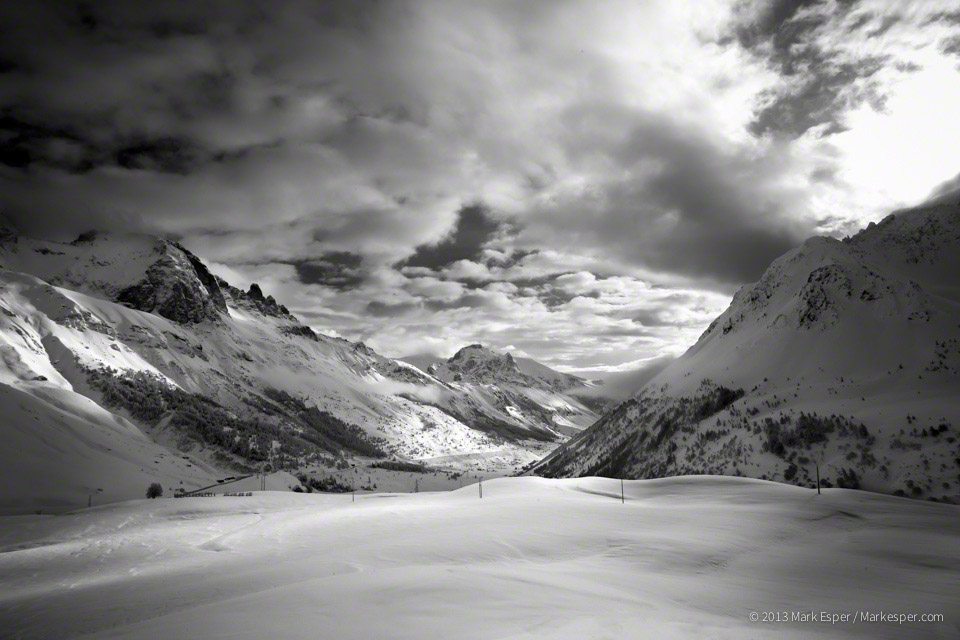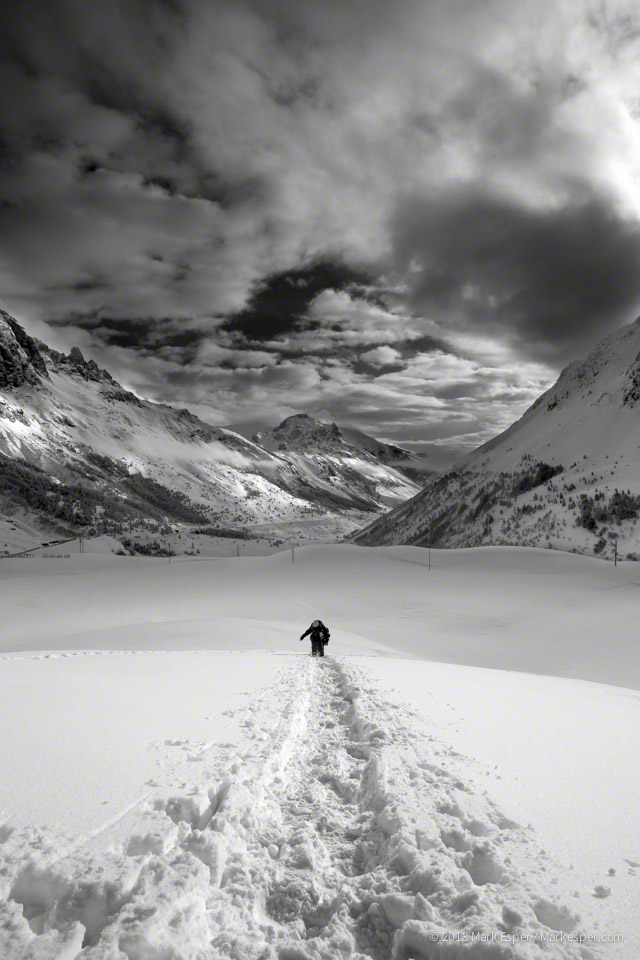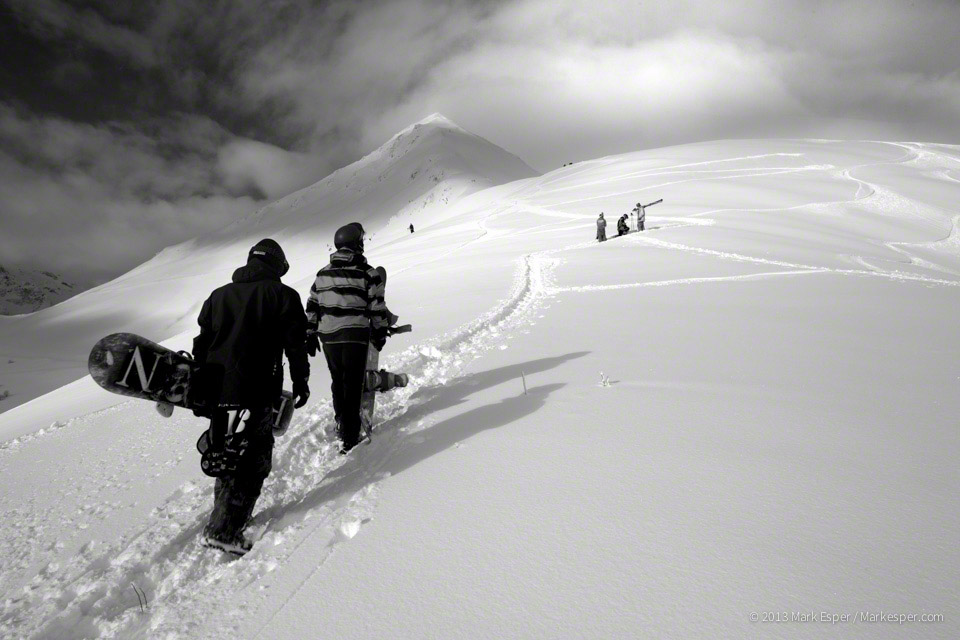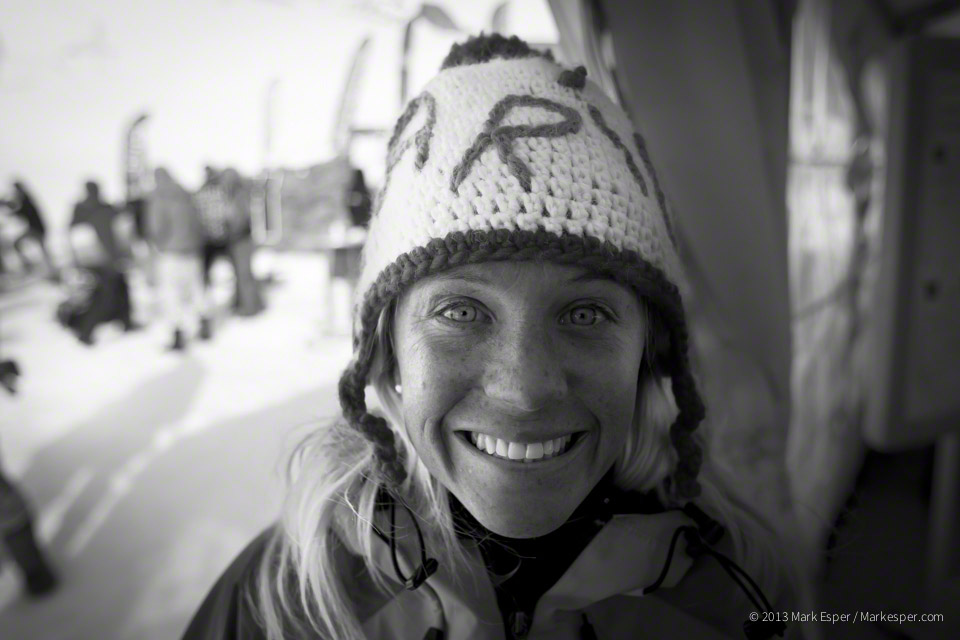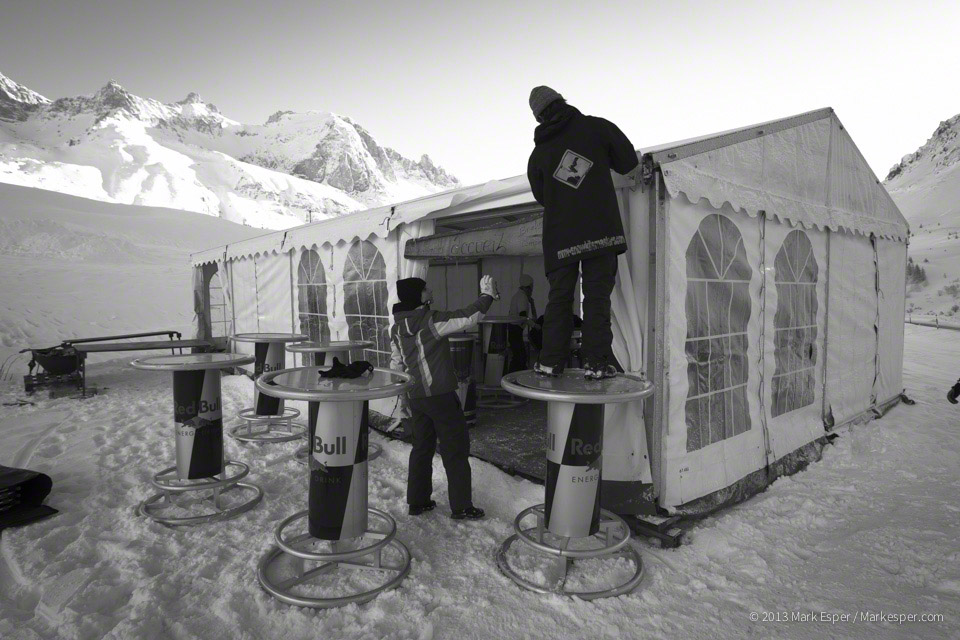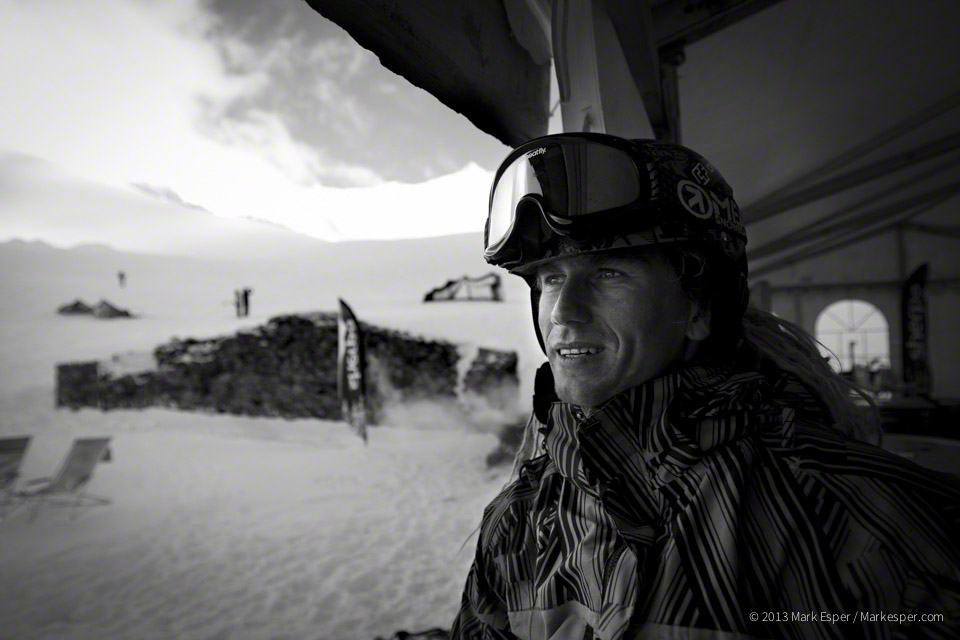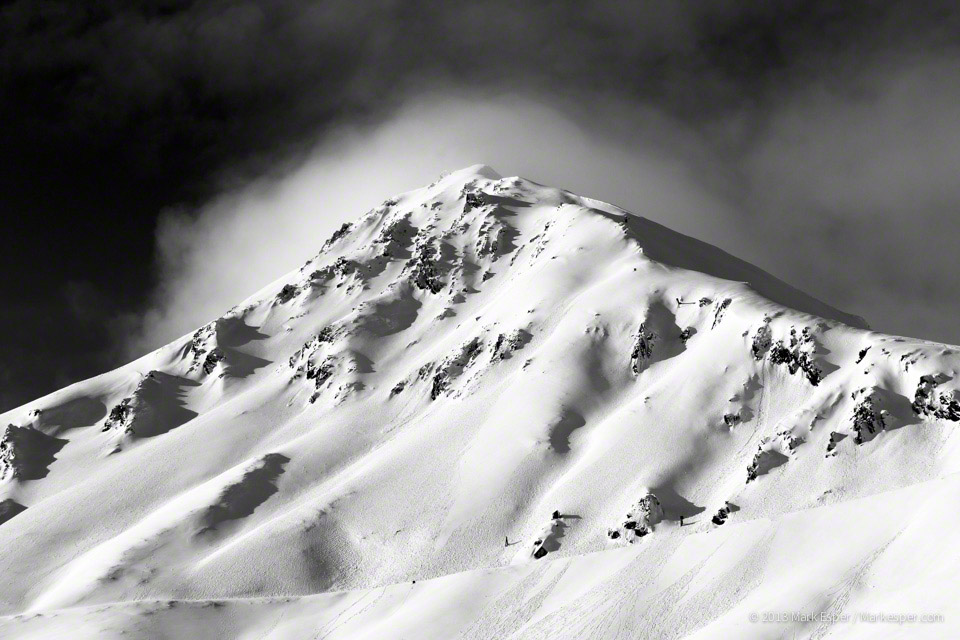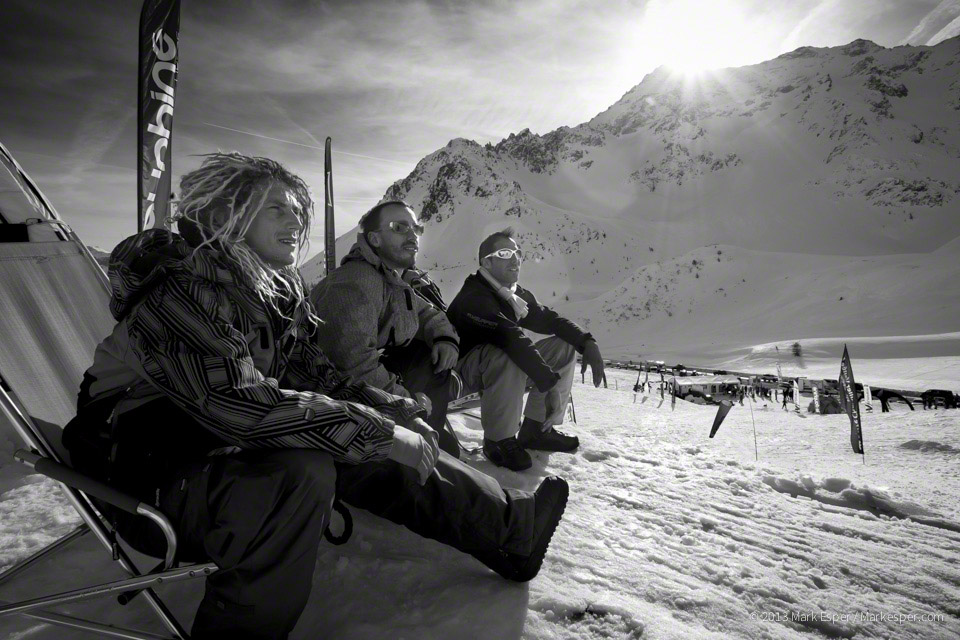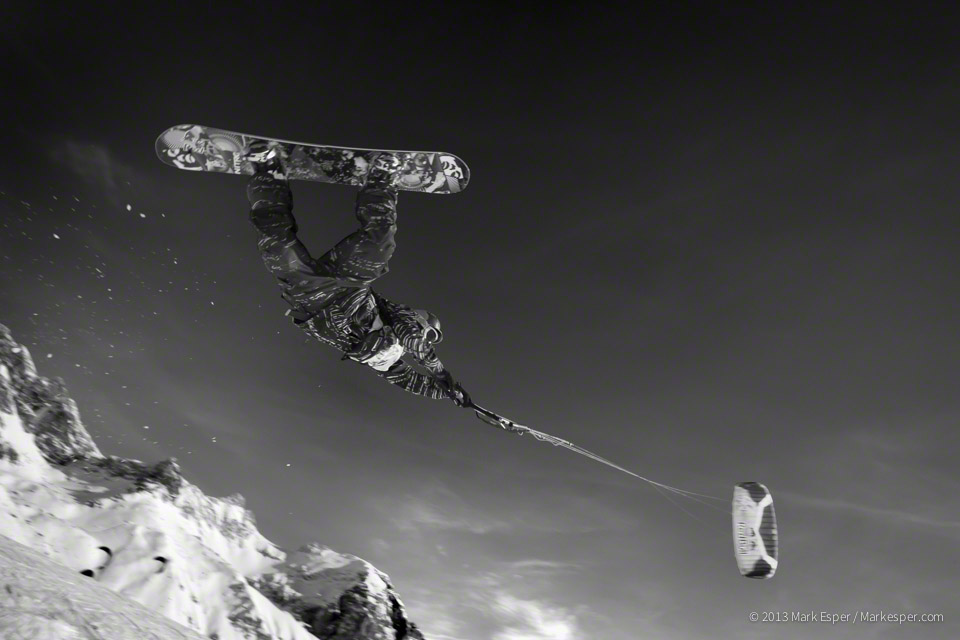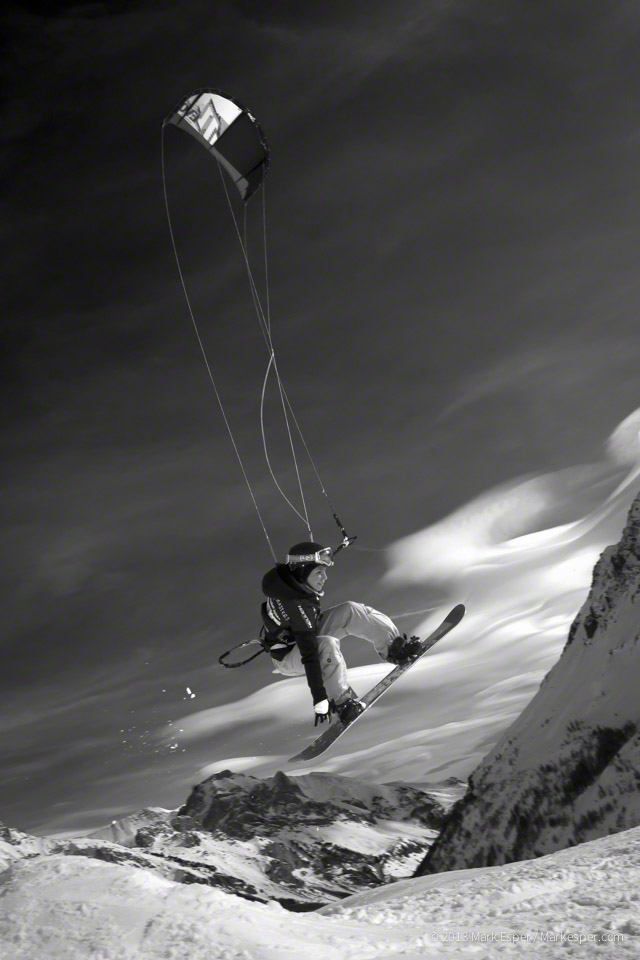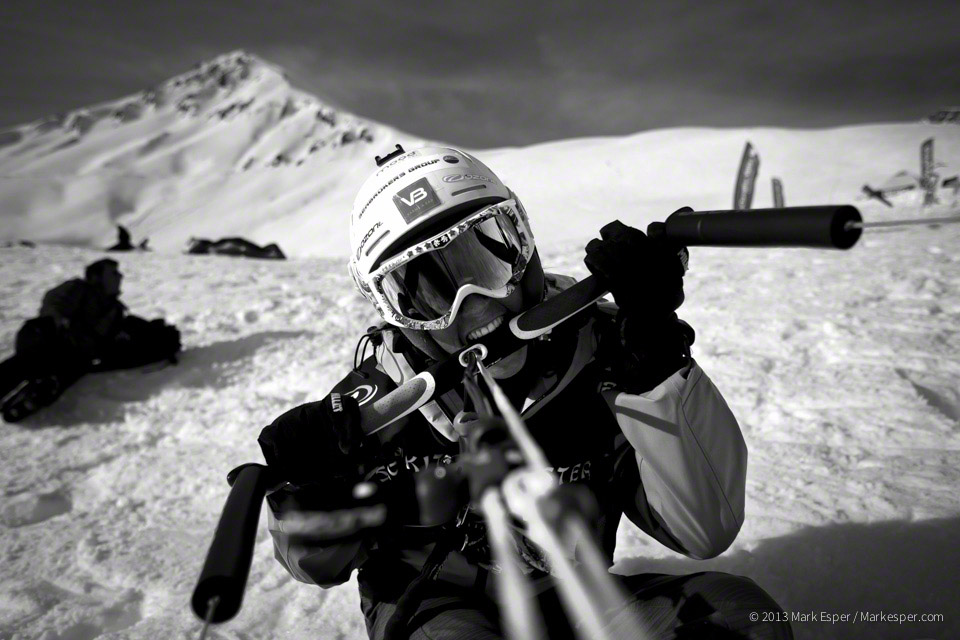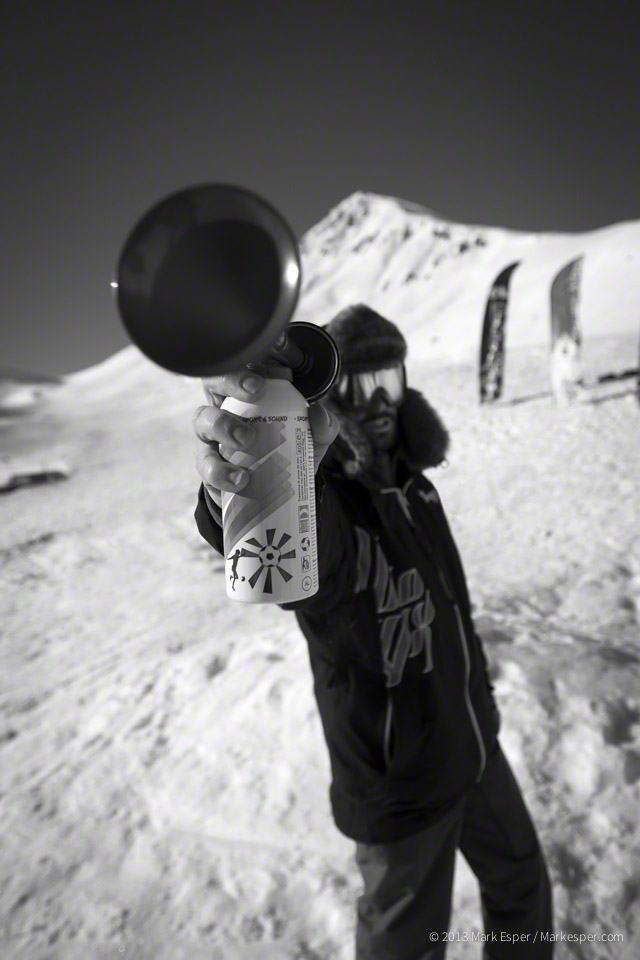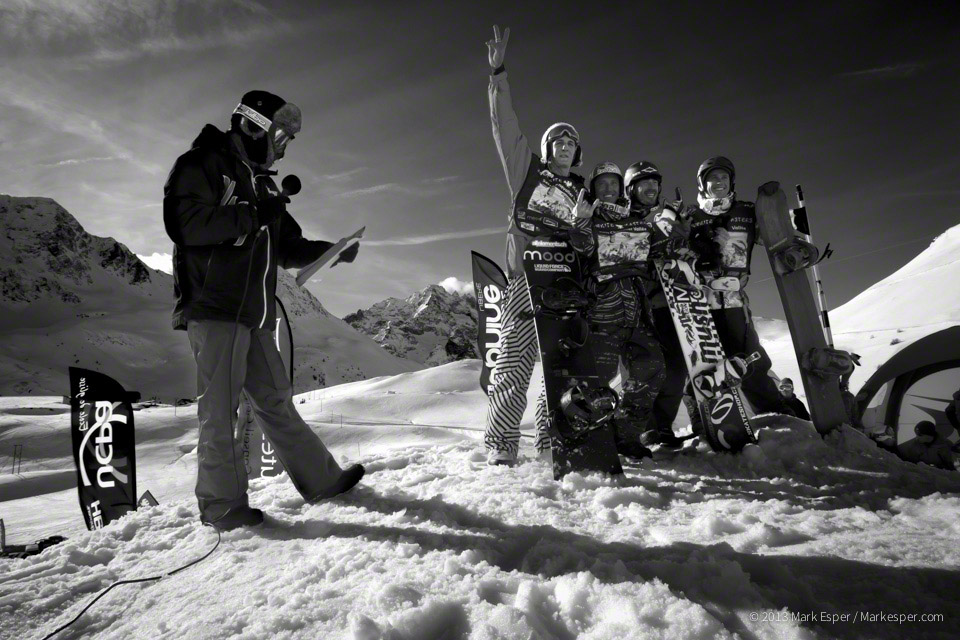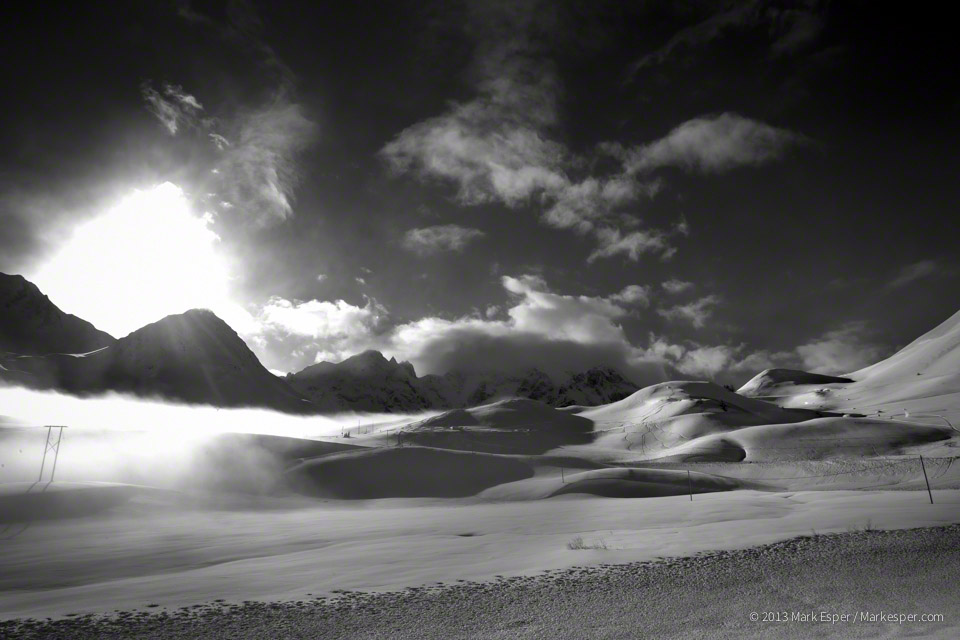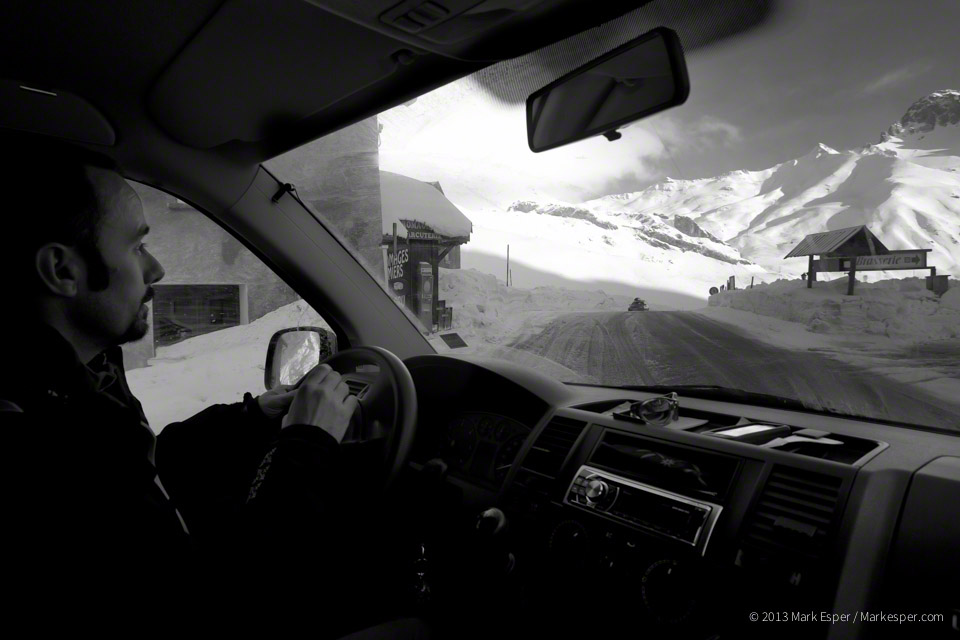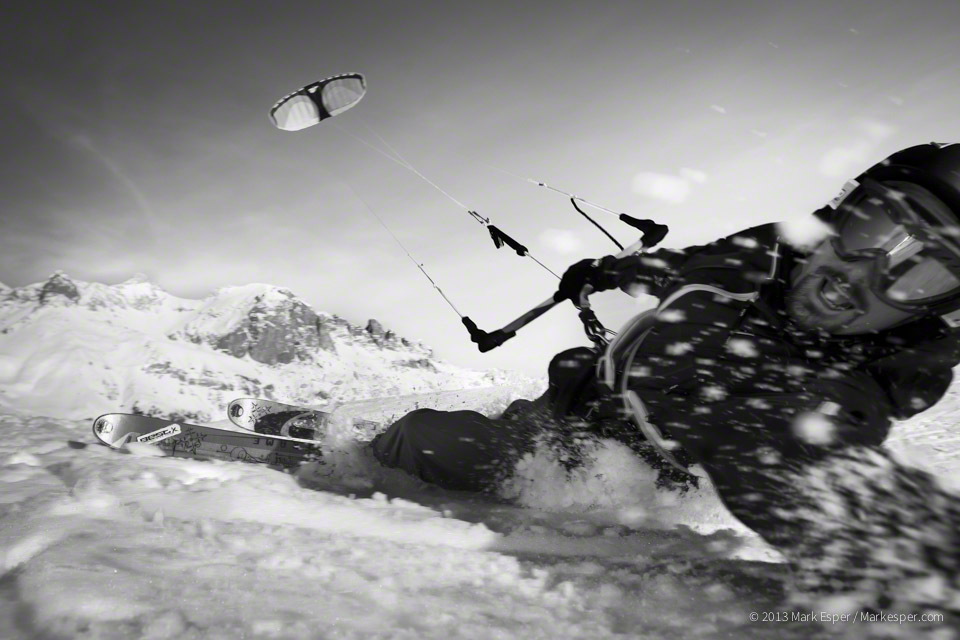There is a gathering after every Christmas which takes place at high altitude. When most people are trying to shake off seasonal hang-overs and face up to the prospect of another year working at their desks, others gather to play high in the French Alps. The Snow Kite Masters is now seven years old. Like the mountain’s morning light it creeps around the calendar, hugging the hillsides of the mind. Lifts are thumbed, bags are packed, flights are booked and baggage allowances weighed so as to make the long journey to France.
Snow kiting is a capricious sport. The marriage of kite surfing and snow boarding, it has one huge difference. Here in the high mountain wind, a rider’s jump can drift well into double figures as the airborne seconds tick by. The ingredients are simple. Sun, snow and wind. And yet these elements rarely travel together. It teases you with the possibility of the moment when all three will come together to create an extreme sporting spectacle.
The snow part of the equation is Serre Chevalier, one of the major ski destinations in the south east of France. A meringue-dipped landscape of snow and clouds close to the Italian border it is blessed (or cursed) with its own micro-weather system. The wind can gather on a whisper and disappear in a shout. No warning. No explanations. The only way to be sure is to be there and wait. So the snow kite masters annually thread their way through the valley’s icy roads to the Col de Lauteret to patiently watch the skies. In the thin air it’s a steep climb up the Col’s slopes (2,058m at its peak). As the competition goes further through the week, the snow’s character will change day by day. At the beginning it will feel like wet cotton underfoot but after a couple of days of competitive riding it’ll be as hard as tarmac and just as unforgiving.
For one man there isn’t a moment to lose. Matthias Charton, Race Director, ‘fresh’ from a gruelling 10 hour drive from his home in Belgium, is measuring the wind. “You need to play with the weather. You can calculate and say ok, we only need eight days but I try to have all the results done in a single day. I really try. But I never do.” Around him a frenzy of bodies wrapped in snow gear and goggles unpack steamed-up trucks and cars. Inflatable tents, judging towers and marquees are all quickly erected. The kites finally start to appear, inflatable crescents billowing and bouncing on the snow. It’s a daily ritual. Everyone in the camp is in a race with the wind.
“It’s the spirit of the sport. Everybody helps each other. Everybody’s friendly and nice. It’s the mountain mentality y’know?” says Matthias.
When the wind comes it brings extreme cold with it: wind chill. “Beginning at 9.30am the wind’ll probably hit minus 20 degrees. That will be cold, very cold. So be ready.” Matthias’s voice is everywhere. He doesn’t need a megaphone. His impatience and urgency crackles like static around the camp, arms waving and pointing, trying to motivate those in the cold.
The pro riders arrive. For Guillaume Chastagnol, the mercurial Frenchman with the lyrical board style, it’s a short journey. He lives in the valley. As the perennial man to beat, you can quickly see he’s grown up on these slopes. It literally is ‘his’ backyard. For past champions Kari Schibevaag and Bjorn Kaupang from Norway it’s a longer journey made up of heavy bags, budget flights and rental cars (sometimes mistakenly fitted with summer tyres). The Czech ‘mafia’ of Petr Pechi Pechacek, Marek Murphy and Marcin could argue they have it harder, driving the whole way from eastern Europe in a cramped, steamed-up estate car. And yet, with only a few days into the new year they will all come. Their dedication to this event started well before the first bag was packed.
Many riders have day jobs, businesses. Some are sponsored, most are not. Sponsorship in most other sports means free flights, accommodation, massage, physiotherapists and the support of a team principal or manager. When this competition’s done and the photographs have been taken all these guys could be looking at is maybe a free kite or two. Still a fledgling sport compared to kitesurfing, snowkiting is all about high risk and low rewards. But like many nascent sports there’s a strong, tangible spirit at it’s core. It warmly binds everyone together, rider, competitor, organiser, alike with the same faces returning year after year.
Huddled in the main marquee friendships are warmly re-made, stories swapped or re-told over steaming hot plates of carbohydrate. The wait for the wind is on. Riders hover by the entrance, scanning the far peaks for dustings of snow blowing off the mountain tops.
Cramped together in the tent, days can pass like this waiting for the wind and this year they do. And then on the fourth day it comes. Everything all at once. The snow, the light, the wind and the smiles all burst through the gloom and changeable weather. “We go now. Judging in fifteen minutes”, race director Matthias Charton is grabbing everything he can. An event with no end, no winner, is not an event. It’s his job to make sure that never happens, in spite of the fickle weather.
Air horns are blown. Coloured flags are raised and lowered to signal the start and end of the heats. Three judges score riders for trick combinations and jumps under Matthias’s watchful eye. “I am always confident of my judges because if they follow the rules I don’t care about the results. Or who wins. The riders know I am trying to be fair, to run the fairest possible competition.”
One after the other, heat after heat the riders hit the ‘kickers’ (ramps shaped by snow ploughs), their kites launching them high into the deep blue sky. Above the ground some perform ‘grabs’, clutching their boards mid-flight or ‘go un-hooked’ disconnecting their control bars so they can acrobatically swing them round their kites one handed before ‘making’ their landings. Crashes don’t count in the quest for points.
Many go big and brave and wipe out, forfeiting their score. Some play conservative and still don’t make it through the heats. It’s a gamble. Some have no choice; many riders are carrying injuries. Every trick or manoeuvre is a calculated risk taken on the moment with a multitude of variables to consider: wind, speed, line tension, ease of landing, complexity of trick and more. These are the decisions the riders repeatedly make within their allotted five minute heat. Some riders like multi-champion Guillaume Chastagnol make it look like a ballet, writing flowing sequences, jumps lyrically joined up between the snow and the sky. Others like Andreas Toveruud catch your breath with their bravery, plunging his kite towards the ground as his twisting body is ripped sideways only feet above the hardened snow. And still the fickle wind can play it’s part. Just before your heat it can rip through in a huge gust or unkindly fall away just before you start. There’s a lot to consider.
In the end, after two days riding in good conditions the results are in. Guillaume Chastagnol is the kite master, Kari Schibevaag, the kite mistress. There are other winners, Johann Civel, Laurent Sublet and Estelle Lambelet in the kite ski competitions. They have all prevailed against the wind, the mountain and the other riders.
Driving back to their chalets and hotel rooms, they must prepare for their next challenge: getting home. The weather still has them in it’s grip even though the competition is over with blocked roads and treacherous conditions. Hard to get to and sometimes even harder to leave, Serre Chevalier and the Snow Kite Masters tournament will pull them all back again next year, just as your New Year’s Eve party is dying down.
For Race Director Matthias Charton a long drive to Belgium beckons but not before he takes to the empty slopes himself to have some serious fun.
Mark Esper
January 2011
Status: Selected images published in National Geographic Traveller Magazine.
Awards: nominated for
Prints: Selected Prints are available for online purchase.
Image Licensing: Mark Esper. All Rights Reserved.
